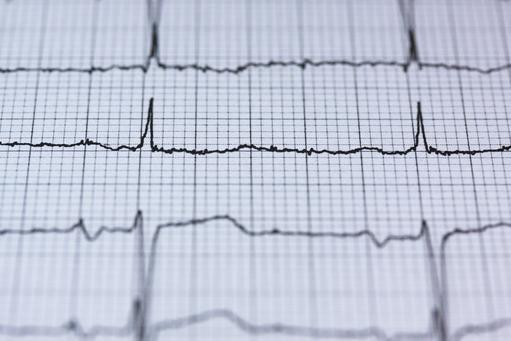The end of doctors
- A second technology revolution threatens the future of healthcare
- Healthcare systems that ignore evolving technologies will collapse
- Most healthcare systems are trapped by three basic failures
- Doctors are the interpreters and not the processors of medical knowledge
- Will a computer decide to turn off a life support machine?
- Who owns the medical information on the Internet?
The role of doctors is about to change more than it has in the past two centuries, as the technology revolution enters a new era.
Radical change
This is the conclusion of Richard and Daniel Susskind in their book, The Future of Professions, published on 22nd October 2015 by Oxford University Press. They argue that, over the next 20 years, “the second future”, dominated by artificial intelligence (AI) and the Internet, will drive radical changes in healthcare systems, which will involve the transformation of how medical knowledge is made available.
Today, computer systems can delve into vast amounts of patient data, identify trends and make more accurate predictions than doctors. Machines such as IBM’s Watson, which can attain high levels of intelligent behavior is already being used in medicine. In parallel, the Internet provides people with new and effective ways to build communities and share healthcare information.
Never too big to collapse
Some doctors argue that their activity will never change because it depends on deep expertise, creativity and strong interpersonal skills; none of which can be replaced by computer systems. Earlier, managers of global companies that dominated world markets made similar claims before there enterprises grew obsolete and collapsed.
Twenty years ago, the failure of global companies to meet transformational challenges resulted in 74% of them leaving the Fortune 500 as new technologies and innovations opened the way for agile start-ups and entrepreneurs. The list is long, but here are a few examples. Digital Equipment and Wang Laboratories, once leading computer firms, disappeared completely. Even resurgent giants such as Apple and IBM stared into the abyss of irrelevance, and made painful changes before clawing their way back to the top.
In the 1980s the advent of digital photography, software, file sharing, and third-party apps ended Eastman Kodak’s world market domination, during which time Kodak made breakthrough technologies, which included the Brownie camera in 1900, Kodachrome colour film, the handheld movie camera, and the easy-load Instamatic camera. Motorola, another global giant, that developed and built the world's first mobile phone, and dominated that market until 2003, failed to focus on smartphones that could handle email and other data; and as a consequence, rapidly lost share to newcomers such as Apple, LG, and Samsung.
Dr Devi Shetty, world-renowned heart surgeon, founder, philanthropist, and chairman of Narayana Health, India’s largest hospital group is viewed as the person who will have the biggest influence on 21st healthcare. Here he describes how information technology is set to radically change healthcare:

(click on the image to play the video)
Healthcare systems not immune
The Susskind’s agree with Shetty, and believe that healthcare systems, predicated upon antiquated patient-doctor technologies, face a similar demise to that of large companies that failed to adapt and change. The more successful healthcare systems will be those, that copy large companies who survived by collaborating with smaller, agile firms either as suppliers or partners. Rigid bureaucratic healthcare systems that find it more difficult to innovate will fail.
Three reasons for failure
Failure to address three major challenges accounts for the failure of most healthcare systems. The first is the continued investments in failing antiquated systems, and the consequent failure to pursue fresher, more relevant ones. The second is psychological: healthcare systems and doctors fixate on what made them successful in the past, and fail to notice when something new is replacing it. The third challenge is strategic: healthcare systems that only focus on today, and fail to anticipate the future will fail.
Previous HealthPad Commentaries have illustrated these three failures by the billions spent on failing diabetes education programs over the past decade, while the incidence of the condition escalated. This is because diabetes education and awareness programs fixate on antiquated systems, and fail to embrace, smarter and more effective ones. See: Behavioral Science provides the key to reducing diabetes
The concentration of medical expertise
A doctor’s raison d'être is to provide solutions to problems that people do not have sufficient specialist knowledge themselves to solve. Previously doctors were the ‘processors’ of medical knowledge, but with medical information becoming ubiquitous, increasingly doctors are becoming the ‘interpreters’ of medical knowledge. Doctors are gateways to specialist medical information.
In most healthcare systems, doctors are a huge and increasing expense, a large proportion of them use antiquated methods, and the expertise of the best doctors is only enjoyed by a few. This is changing by technological innovators finding ways to make medical expertise more widely available. Also, technology is enabling clinical expertise to be broken down into smaller tasks, which can be better achieved with a machine; telemedicine is just one example.
Who owns medical knowledge?
Online healthcare information empowers patients and threatens doctors by providing people with medical knowledge that previously resided in the minds of doctors. Such knowledge, which can help to diagnose illnesses, is free, increasingly common, and controlled by users. An important unresolved question is, who owns this medical knowledge?
Takeaways
Doctors exist to provide solutions to medical problems. If technology provides better more reliable solutions, the need for doctors dissolves. However, the most convincing objection for the displacement of doctors is an ethical one. Is it morally wrong to leave the decision to turn off a life support machine to another machine?
The debate is just beginning.
|






